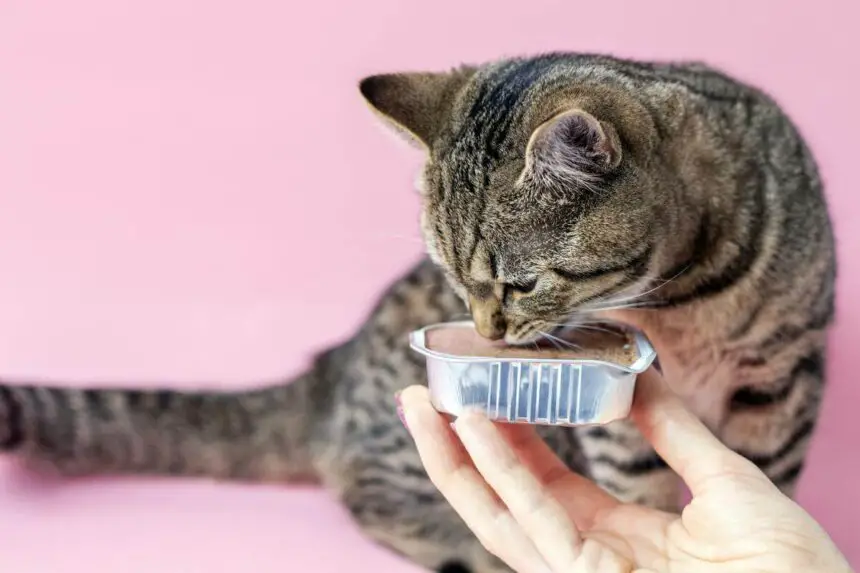Have you ever experienced the baffling dilemma of your beloved feline companion turning up its cute little nose at a bowl of wet cat food? It’s frustrating, isn’t it? You might have thought that cats naturally love the moist, savory goodness of wet food, but not all kitties are on board with this culinary adventure. In this blog post, we’re delving into the enigma of why your cat won’t eat wet food and how you can work your way around it.
The Mysterious Aversion
Before we jump into solutions, let’s understand why some cats just won’t touch wet food. These finicky felines might have their reasons, and it’s crucial to figure them out.
1. Texture and Taste Sensitivity
Cats are like tiny connoisseurs of cuisine, and they have a knack for being picky eaters. If your kitty hasn’t been exposed to a variety of textures and flavors from a young age, they might be suspicious of anything that doesn’t fit their norm. Wet food can vary in texture, from pâtés to stews, and it’s possible your cat just hasn’t found its preferred style yet.
2. Transition Troubles
Changing your cat’s diet is a bit like switching your morning coffee from black to a frothy cappuccino. It takes time to adjust. If you’ve been feeding your furball dry food for eons and suddenly introduce wet food, it’s like taking a drastic detour on their culinary journey. Some cats might be cautious about the new, unknown territory.
The Benefits of Wet Food for Cats
Before we dive into the nitty-gritty of transitioning your cat to wet food, let’s remind ourselves why it’s worth the effort.
1. Hydration Hero
Cats are notorious for being bad water drinkers. In the wild, they get most of their hydration from the prey they devour. Wet food comes to the rescue by providing a hefty dose of moisture, keeping your kitty well-hydrated. This is especially crucial for those lazy seniors who often forget to quench their thirst.
2. Urinary Health Savior
Urinary crystals and infections can turn into a nightmarish ordeal for your cat. Proper hydration can be your first line of defense. Wet food helps combat these issues by preventing kidney problems and dehydration. No more worries about your kitty’s delicate urinary tract!
Transitioning Your Kitty to Wet Food
Okay, now that we understand the ‘whys’ let’s get into the ‘hows.’ Transitioning your cat from dry kibble to scrumptious wet food might take some patience, but it’s worth every second.
1. Set a Feeding Schedule
If you’ve been practicing the “all-you-can-eat” buffet style of feeding, it’s time to change tactics. Cats love routine almost as much as they love napping. Set specific mealtimes, and let your cat know that it’s grub time. Leave the food down for about 20 minutes, then take it away. This teaches your cat that food won’t be available 24/7, and they better eat up when it’s there.
2. Gradual Transition
It’s not wise to shock your cat’s taste buds with a sudden switch. Begin by mixing a small amount of wet food with their dry kibble. Slowly, over days or even weeks, increase the ratio of wet to dry. This gradual transition eases your kitty into the wet food world.
3. Play with Consistency
Some cats are all about the texture. If your furball still turns its nose up, try adding a splash of warm water to the wet food. It changes the consistency and might be more to their liking. Think of it as adding a twist to a classic recipe – your cat might appreciate the effort.
4. Get Sneaky
Cats can be a tad skeptical, so you might need to get crafty. Put a tiny bit of wet food on their nose or paw; sometimes, the intrigue gets the best of them, and they’ll give it a lick. It’s like a cat version of “mystery tasting.”
5. Flavor Variety
Remember, cats are diverse individuals, and they have their own taste preferences. If your feline friend isn’t fond of one flavor or texture, don’t throw in the towel just yet. Experiment with different types, like stews or pâtés. It’s a bit like having a tasting menu for your furry food critic.
6. Don’t Starve Your Kitty
Patience is key in this journey. Your cat should never go without food for more than 24 hours. Fasting can lead to a nasty condition known as ‘fatty liver disease,’ which is as terrible as it sounds. If your cat remains stubborn, offer their original dry food and restart the transition slowly.
Balancing Act: Wet vs. Dry Food
You don’t have to go all-in on wet food if your kitty remains steadfast in its dry food loyalty. Both have their perks, and finding the right balance for your cat’s needs is crucial. Cats are creatures of habit, and sometimes, transitioning might take a little more time.
Conclusion
So, there you have it – the mystery behind why your cat won’t eat wet food, and the tricks to change their minds. Remember, cats are unique, and patience is your best friend in this endeavor. Keep experimenting, keep adapting, and most importantly, keep loving your furball, whether they’re into wet food or not. Your kitty’s happiness is what truly matters.


